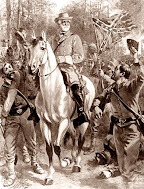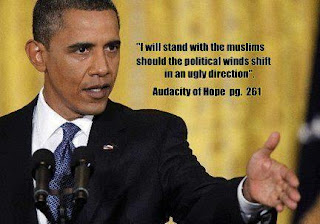Part I
Here Be Monsters

When ancient mapmakers of the world ran out of—what then passed for—hard data, they would often depict sea serpents such as the kraken or its like lurking in those odd and ill-defined corners of their charts. As the power of America’s federal government expands well beyond all previously known boundaries, we now are stumbling into these same poorly illuminated precincts with little to guide us save the lessons of history, if not our own apprehensions and instincts. The horrors that await us are neither imaginary nor can they be shrugged off as inconsequential myths. Too many forces are sweeping us towards the vortex of a New World Order that only an elite few will find at all comfortable or survivable.
All of which returns us to McDonald’s requiring college degrees. While the current recessionary economic climate has certainly made the workplace into an employer’s market, there is another important consideration as well. As seen in Part I, Liberal policies have crippled the public education system—through social promotion and elimination of tracking—while wreaking similar havoc in the government and commercial sectors alike. Now that employers are unable to administer IQ tests to prospective employees, their demanding that these applicants have a college degree means new hires will likely meet some minimal standard of competence. High school students who legitimately graduate with a good scholastic track record can thank Griggs v. Duke Power Co. for the difficulty they now will encounter when trying to secure anything better than the most menial jobs.
Another factor that lurks behind this increased standard in hiring qualifications is the fact, as noted above, that marginally educated people are at a much greater risk of becoming involved in criminal activity. One emerging corporate service is a database that collects a register of retail employees who have been fired or convicted for stealing store merchandise. Valued at an annual $15 billion and representing some 44% of all stolen merchandise—the industry term for employee theft is “leakage”—it is no small matter. This is especially so when given the food industry’s razor-thin profit margins that can just as often hover in the single digit percentage range. Does anyone honestly think that individual outlets or corporate headquarters will voluntarily shoulder these sort of leakage-related losses? Clearly, nothing of the sort is true. Just like with business taxes, such expenses are passed along to consumers in the form of increased prices.
In a case of disparate impact run amok, Pepsico paid $3.13 million to settle an EEOC (Equal Employment Opportunity Commission) lawsuit against them for using criminal background checks as part of their hiring policy. A standard definition of the term “disparate impact” is the “adverse effect of a practice or standard that is neutral and non-discriminatory in its intention but, nonetheless, disproportionately affects individuals having a disability or belonging to a particular group based on their age, ethnicity, race, or sex.” Even if a hiring policy is racially neutral in its terms and purpose, such a course of action still can be deemed legally discriminatory if it adversely impacts one race more than another. None of which protected Pepsico’s right to implement its legitimate policy of not hiring convicted felons.
Normally, corporations large and small routinely would screen out job applicants who had prison records. Again, Liberal elements simply cannot tolerate businesses protecting their own interests. This, despite how tort law considers crimes committed by an employee during work hours to be a form of “negligent hiring” and thereby viewed as legally actionable such that employers can be held responsible for harms committed by a worker if the employer knew or should have known that the employee was dangerous. If the tool of background checks is no longer available, how can a company protect itself legally against charges of negligent hiring? This sort of double bind exemplifies the contradictory and anti-business atmosphere that permeates modern government regulation and race-based “protections” in general.
Do not for one minute think that this sort of paradoxical legislation is limited to the fast food trade or retail merchandisers. Consumers—read: White middle class Americans—aren’t just forced to squander their hard-earned money so that industry can recoup the cost of counterproductive and undeserved legal protections for minority interests. All too often, we pay with our very lives. Most certainly eleven men lost their lives when the BOP (Blowout Preventer) on British Petroleum’s Deepwater Horizon offshore rig failed. While it is uncertain that alterations to the BOP caused that disaster, the valve had lately been overhauled by a Chinese subcontractor. Regardless of any potential responsibility, China’s near total disregard for international law would make it almost impossible to recover any damages.
A report by the Norwegian risk management firm, Det Norske Veritas, found that, “The blowout preventer that should have stopped the BP oil spill cold failed because of faulty design and a bent piece of pipe, a testing firm hired by the government said Wednesday. The report appears to shift some blame for the disaster away from the oil giant and toward those who built and maintained the 300-ton safety device.” [emphasis added]

This beggars the question as to whether or not the Chinese subcontractor that rebuilt Deepwater Horizon’s BOP was competent enough to spot any design flaws or faulty workmanship to begin with or if they were even willing to report such a potentially devastating defect whose failure could only help to further cripple America’s economy. Equally clear is that the 210 million gallon oil spill came close to destroying surrounding gulf coast economies to the tune of an estimated $23 billion over a three year period. Was whatever costs BP avoided by hiring the Chinese worth what some have calculated to be over $100 billion in cleanup costs and penalties? Does doing business with China really save that much money in the long run? Of equal importance is the question of how many companies are compelled to use foreign subcontractors in an effort to reduce the overhead of operating stateside facilities that must meet counterproductive minority hiring standards? Does anyone honestly think that China has a policy like Affirmative Action?
Ask yourself this. Why is it that America’s politicians do not demand a crackdown upon the poorly crafted, flawed, counterfeit, contaminated or outright toxic goods with which China routinely floods our commercial markets? That China retains so much of our national debt is wholly immaterial. Any threat by them to dump such massive holdings stands to harm China far more in that the value of such financial instruments would plummet if trading markets were suddenly flooded with them. American law does forbid domestic Chinese interests from making political campaign contributions that might affect elections in the USA. How then does China manage to influence so much of our political system?
As any competent detective will tell you about offenses that are not crimes of passion, follow the money. Put another way, cui bono (who benefits)? Please take a moment to consider which American companies do business in Communist China. Apple Computer, Best Buy, Price Club and, last but not least, WalMart are major players in China’s recent industrial ascendancy. Many of the largest corporations doing business in China don’t donate to just one American political party. They contribute to both of them. This greases palms on both sides of the aisle and assures near-total inaction with respect to China’s predatory economic practices. It also explains the deafening silence over China’s direct role in the offshoring of almost three million American jobs between 2001 and 2010. This loss of jobs is only compounded by China’s currency manipulation, which artificially keeps the renminbi (RMB) at close to 40 percent below its actual value against the dollar. Fred Bergsten, director of the Peterson Institute of International Economics, estimated that eliminating Chinese currency manipulation “would generate an additional 600,000 to 1,200,000 U.S. jobs.”
Keep in mind that external forces are required to help maintain China’s economic charade. As a nation dependent upon an export economy, China is exceptionally vulnerable and must bluff its way through the competitive minefield. The Chinese people themselves cannot consume all of the products that they manufacture. They cannot buy or eat all of those flat screen televisions, laptop computers, DVD players and iPhones. This is the danger of an export dependent economy. As it is, China’s fast and loose approach to regulation plus its lack of transparency—some would say intentional opacity—has already begun to take a toll on Western investors.

IPOs on Chinese exchanges have undergone a serious decline from 365 worth $6.1 billion in 2010 to 202 worth $3.7 billion in 2012. Venture capitalists are also fleeing the Chinese market. In 2010 there were 38 Chinese IPOs in America. In 2011 that number dropped to 15 and for the entire year of 2012 the total number was 2. Likewise, IPOs in China have fallen to 150 in 2012, down by 45 percent from 2011.
This withdrawal of investment is also being prompted by lack of respect for intellectual property rights and international patents that often see Western designs copied within months of arriving on China’s shores, regardless of legal protections. Another major change involves companies shifting operations from China to other lower overhead “mini-dragons” like Vietnam or even just relocating within China itself by moving from high-income coastal cities to the interior where wages can drop significantly. As an example, between 1994 and 2003, workers in Beijing experienced a 6.20 percent increase in GDP. For those in the western Yunnan province that number was a meager 1.88 percent.
One of the most significant external forces involved in China’s successful bluff is WalMart. Consider how, in 2006, out of America’s $234 billion trade deficit with China, WalMart alone represented a $27 billion share of it. That is over 10 percent of our Chinese trade imbalance due to a single company’s operations. At that time, China alone represented almost one third of America’s international trade deficit. This helps to explain how, between 2001 and 2006, WalMart alone caused America’s trade deficit with China to grow by 11 percent.
The Demons Within
Just like China, WalMart has an exceptionally predatory business model. City councils across America opt for huge tax relief packages and other incentives in order to lure one of WalMart’s big box stores into their towns. One immediate result is the hollowing out of all local “mom and pop” small businesses. A second and equally insidious effect is how WalMart specifically trains their employees to game government benefits such as food stamps, daycare, Medicaid and welfare due to the exceptionally poor wages that they pay. The end result is that, unlike small business operations, WalMart’s presence often becomes a net economic burden for the local municipality even as it strips out wealth that rarely finds its way back into the surrounding community.
Add to this the fact that WalMart is now America’s leading employer, biggest company and largest grocery retailer and there emerges the picture of suicidally cost-sensitive consumers—many of them in the less than $70k per year income range—who, just as often not being born here, have little sense of patriotic duty or loyalty to America. Even so, each week almost one third of America’s population will enter a WalMart store. Additionally, WalMart’s buying power is so tremendous that suppliers often find 20 to 30 percent of their production being sent to this one customer. Like heroin addiction, it is a very unhealthy dependence.
Whether it is Levi Strauss or Master Lock, numerous American companies have been forced to move their manufacturing overseas to meet WalMart’s ruinous demands for lower prices. The linked article details ten different ways that WalMart is destroying America’s industrial base even as its owners—six Walton family members who inherited the business—have amassed a fortune equal to that of the least-wealthy 30 percent of Americans combined. Yet, with all that money, the Walton family has donated a miserly 2 percent of its net worth to charity compared to 48 percent for Bill Gates and 78 percent for Warren Buffet. This despite how, with $405 billion in annual revenues, WalMart is equivalent to the 23rd largest economy in the world, bigger than Sweden’s. The company is also the largest employer in almost half of the American states.
As is so often the case, such rapacious business practices have now come back to haunt WalMart. On November 24, 2011 a fire swept through the Bangladesh based Tazreen Fashion factory killing 117 workers—many of whom were burnt beyond recognition—and injuring another 200. Tazreen Fashion is a subsidiary of Tuba Group, a textile and clothing conglomerate and WalMart supplier. Bloomberg News reported how, in a meeting during April of 2011, WalMart had balked over helping upgrade safety at Tazreen and other suppliers citing expense as a central reason.
Half of the 4,500 factories in Bangladesh do not meet legally required safety standards. Now, Sumi Abedin, a survivor of the Tazreen Fashion fire is suing WalMart for compensation in a case that promises to have all the same damaging allegations as the Foxconn suicides did for Apple Computer. Whether or not one agrees about any legal responsibility on WalMart’s part, it is abundantly clear that their policy of exerting downward price pressure imparts some degree of moral and ethical culpability. There can be no doubt that WalMart’s obsessive focus on profits comes at the cost of human life.
Clearly, shoddy practices at overseas factories cost foreigners their lives but how does trade with China cost us our lives? It isn’t just job loss and homelessness that destroys individuals. China routinely finds itself embroiled in scandals concerning children’s toys coated with lead paint, drywall that contains corrosive residues which attack electrical wiring causing house fires, counterfeit aircraft bolts that have voids or foreign matter imbedded in them allowing steel frame homes to collapse in hurricane alleys like Florida, not to mention melamine contaminated feeds that kill our beloved pets.

None of which addresses how each year 1.2 million Chinese people needlessly die due to some of the planet’s worst air pollution. Out of the world’s 20 worst polluted cities, sixteen are in China. Does anyone seriously believe none of that toxic waste isn’t blown across the Pacific to American shores? As it is, almost 60 percent of the 24 million tons of coal that America exports each year goes to China. Making things worse, the mercury content of Chinese coal is particularly high. Under the right weather conditions pollutants from China, including mercury, ozone, sulfur and nitrogen oxides, black carbon and desert dust, can reach the west coast of the US within days.
Next: Strangulation by Legislation and more.
The next parts of this essay will link corporatism’s murder of America and its middle class with Big Government’s lust for even greater social engineering powers.
Tags: War On America; Communism; Tyranny; Boston Marathon;To share or post to your site, click on "Post Link". Please mention / link to the Patriot's Corner. Thanks!




























0 Comments - Share Yours!:
Post a Comment